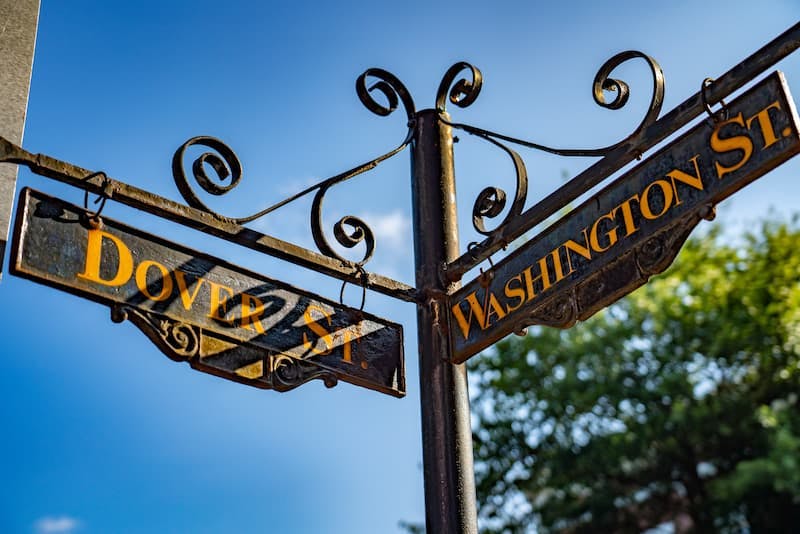State of the Regional Economy
In identifying strengths, barriers, and trends on the Mid-Shore economy, the CEDS committee developed a strategic outlook and identified forces that could influence positive movement in key growth sectors and clusters. This is the foundation for creating a viable and effective economic development approach for the region.
Strengths
The regional economy strengths are intrinsic benefits and market advantages for attracting and retaining businesses in the Mid-Shore region.
- Proximity to major markets (e.g. Washington DC, Baltimore, Philadelphia, New York, Wilmington DE, Norfolk VA)
- Safe, secure, and serene quality of life
- Valued pricing for commercial and industrial sites
- Proximity to federal/ university labs
- Available cap-ex incentives through Enterprise Zones and Opportunity Zones
- Scalable employee training opportunities
- Good general health care facilities
- Moderate market driven labor costs
- Abundant recreational opportunities
- Protected environmental/natural resources
- Availability of Federal and State financial resources for economic and community development
- Access to multiple modes for freight transport and logistics support
- Natural, cultural, and heritage resources for attracting visitors
- Workplace cultural of problem solvers and critical thinkers
- Robust agriculture industry with high value poultry, feed grains, produce, fruit, and seafood
- Focus on investment and development of technology in farm, fish, and food
- Diversified economic profile: large and small businesses in variety of industries
Barriers
Sustainable prosperity is the overarching goal of projects in the CEDS. However, there are barriers that the economic development community must work to remove to reach that goal on a project level and a strategic level. Many of the projects and initiatives in the CEDS have been developed to remove the following barriers.
- Few high-paying, high-skill jobs
- High out-of-region worker commute rates
- Low inventory of affordable housing for middle-income workers
- Inadequate water and wastewater infrastructure
- Low inventory of improved land, commercial real estate, and industrial parks
- Limited public transportation for the workforce
- Burdensome and bureaucratic zoning, land use, and permitting regulations
- Burdensome and bureaucratic environmental regulations
- Low high school graduation rates
- Low post-high school educational attainment
- Low number of start-ups annually
- Decline in stocks of seafood in the Chesapeake Bay
- Outward migration of manufacturing companies
- Outward migration of processors
- Poor stability in the poultry industry



Growth Sectors & Clusters
Building on the region’s strengths and lowering the barriers are two of the purposes of the CEDS. The third purpose is targeting resources and energy on growth sectors that will reap the highest and best return on investment.
Agriculture/aquaculture sector
- Agricultural science and technology
- Aquaculture technology and processing
- Value-added food production
- Horticulture
- High value forest products
Manufacturing sector
- Specialty manufacturing
- Chemicals and plastics manufacturing
Recreation and visitor sector
- Agritourism
- Tourism
Community support and services sector
- Health care
- Government services
Transportation, logistics, and supply-chain support
Environmental science/research/testing labs
Renewable energy technology
Information technology
Construction/trade

Forces Driving the Economy
- Access to diverse and high value markets for farm products is a strong economic force effecting agriculture in the region. Farmers are constantly looking for value added opportunities and markets for specialty crops.
- The absence of unified resource management along with the degradation of the Chesapeake Bay ecosystem and water quality has resulted in declining seafood harvests and adversely impacted the watermen, processors, wholesalers and retailers that have traditionally relied on these resources.
- Housing inventory and pricing has an impact on workforce and talent attraction and retention. Typically, residential real estate prices are lower than in surrounding metropolitan areas providing the Region a competitive benefit for job seekers. However, mid-range priced housing availability is low, thus, leaving middle income workers with few options.

- After the loss of several high employment manufacturers, small specialty manufacturing filled the void. Many of these businesses saw little to no growth during and mid-2000’s recession. While most have recovered, these manufacturers are subject to market volatility and national economic policies.
- Growth vs. No Growth is a hotly debated topic and is a driving force influencing land use policies. There is diversity among and within the counties regarding the path they are going to follow.
- There is a sense among the residents that there are no jobs in the Region. The effect of this mindset is that the Region wrongly has a reputation for lack of opportunity.
- Lack of broadband access impacts all business, particularly technology companies, which in turn limits the number of high skilled jobs in the tech sector.
Factors Affecting Economic Performance
Federal, State, and Local Laws and Programs
Opportunity Zones
The Opportunity Zone program is a nationwide initiative administered by the U.S. Treasury created under the 2017 Tax Cuts and Jobs Act. The program provides federal tax incentives for investment in distressed communities over the next 10 years. Areas designated as Opportunity Zones will be able to reap the benefits of new capital investment to help redevelop underserved communities. An Opportunity Zone is an economically-distressed community where new investments, under certain conditions, may be eligible for preferential tax treatment. Localities qualify as Opportunity Zones if they are a low-income census tract with an individual poverty rate of at least 20 percent and median family income no greater than 80 percent of the area median.
Caroline County
Two opportunity zones are located within Caroline County. Opportunity Zone 24011955302 represents a census tract for Denton, Maryland. According to the 2017 American Community Survey, 3,179 people live in this Opportunity Zone. Opportunity Zone 24011955600 includes the Town of Federalsburg and has an estimated population of 4,328 based on the 2017 American Community Survey.
Dorchester County
Two opportunity zones are located within Dorchester County. Both Opportunity Zones for Dorchester County include the town of Cambridge, Maryland. According to the 2017 American Community Survey, 3,427 people live in Opportunity Zone 24019970400. Opportunity Zone 24019970600 has an estimated population of 4,606 based on the 2017 American Community Survey.
Talbot County
Two opportunity zones are located within Talbot County. Both Opportunity Zones for Talbot County include the town of Easton, Maryland. According to the 2017 American Community Survey, 3,840 people live in Opportunity Zone 24041960300. Opportunity Zone 24041960400 has an estimated population of 5,380 based on the 2017 American Community Survey.
Chesapeake Bay Critical Area
The Chesapeake Bay Critical Areas legislation has also had a significant impact on local industry due to the prevalence of waterways in the region. A significant percentage of the population lives within the 100-year floodplain and the Critical Area and limits the amount of developable lands. Forty-seven percent of Dorchester County’s total acreage is in the Critical Area. Twelve percent of Caroline County’s acreage is in the Critical Area, and forty percent of Talbot County’s acreage is in the Critical Area.
The Critical Area Act, passed in 1984, was significant and far-reaching, and marked the first time that the State and local governments jointly addressed the impacts of land development on habitat and aquatic resources.
The law identified the "Critical Area" as all land within 1,000 feet of the Mean High Water Line of tidal waters or the landward edge of tidal wetlands and all waters of and lands under the Chesapeake Bay and its tributaries. The law created a statewide Critical Area Commission to oversee the development and implementation of local land use programs directed towards the Critical Area that met the following goals:
- Minimize adverse impacts on water quality that result from pollutants that are discharged from structures or conveyances or that have run off from surrounding lands;
- Conserve fish, wildlife, and plant habitat in the Critical Area; and
- Establish land use policies for development in the Critical Area which accommodate growth and also address the fact that, even if pollution is controlled, the number, movement, and activities of persons in the Critical Area can create adverse environmental impacts.
The Commission developed criteria that were used by local jurisdictions to develop individual Critical Area programs and amend local comprehensive plans, zoning ordinances, and subdivision regulations. The programs that have subsequently been adopted by local governments are specific and comprehensive. They are designed to address the unique characteristics and needs of each county and municipality and together they represent a comprehensive land use strategy for preserving and protecting Maryland's most important natural resource, the Chesapeake Bay.
Maryland Enterprise Zone Program
The Maryland Enterprise Zone Program has proven effective in drawing industry to this area. Under this program, companies receive forgiveness for any increase in property taxes for the first five years of operation for an expansion or new enterprise. Reduced taxes on expansion or new enterprise are paid during the following five years. This is in addition to tax credits for new employment.
Dorchester County contains two enterprise zone areas, the Chesapeake Industrial Park in Cambridge and the Hurlock Industrial Park. The Chesapeake Industrial Park contains 47 acres and provides facilities for light manufacturing and office space enterprises to warehousing and distribution facilities. All sites range from five to nine acres and are fully equipped with water, sewer and utilities. The Hurlock Industrial Park includes poultry operations, food processors, display furniture manufacturers, and trucking and warehousing companies.
One Maryland Program
The One Maryland program was enacted in 1999 so that all Maryland counties will share in the state's economic development success. The One Maryland Tax Credit Program provides two special tax credits to businesses that initiate major investment projects in Maryland’s most economically distressed jurisdictions. The One Maryland Project Tax Credit can be as much as $5 million and the One Maryland Start-Up Tax Credit can be as much as $500,000.
Caroline County and Dorchester County have been designated as One Maryland Jurisdictions in the Mid-Shore Region. As a result they are also eligible for grants from the Smart Growth Economic Development Infrastructure Fund. This fund promotes the creation of industrial parks and other needed infrastructure in qualified distressed counties though direct funding of projects identified in the local strategic plan for economic development. The eligible recipients include a local government and MEDCO.
The budget for the Smart Growth Fund is determined annually by the Governor. For the past 3 years the annual appropriation was $10M.

- A qualified distressed county is defined as a county, including Baltimore City, with a local strategic economic development plan that has been approved by the Secretary. The jurisdiction must also have an unemployment rate, for the most recent 18 months, of at least 150 percent of the State's unemployment rate for the same period; and an average per capita personal income, for the most recent 24 months, at or below 67 percent of the State's per capita income for the same period.
- The site must be located in a Priority Funding Area.
- The use of funds include acquisition and development of land for industrial sites, development of water and sewer lines, construction of shell buildings and other infrastructure projects.
Smart Growth
In 1997, the Maryland General Assembly adopted several specific programs, which form the State’s Smart Growth initiatives. Collectively, these initiatives aim to direct State resources to revitalize older developed areas, preserve some of Maryland's valuable resource and open space lands, and discourage the continuation of sprawling development into our rural areas. The Smart Growth legislation allows the State to direct its programs and funding to support locally-designated growth areas and protect rural areas.
The effect of this legislation has been to severely limit the amount of financial resources available to areas outside of municipalities and designated growth areas. This has had both beneficial and negative results for the Mid-Shore Region. It has worked to preserve one of the Region’s greatest assets, the many acres of undeveloped land, which are an attraction for new residents and tourists. However, many citizens believe the program has reduced growth in this region by not permitting state financial mechanisms to be made available for projects located outside of municipalities and designated growth areas.
The following communities have been designated as smart growth jurisdictions. Within each jurisdiction there are also designated Smart Growth neighborhoods.
Caroline County—Denton, Federalsburg, Goldsboro, Greensboro, Henderson, Hillsboro, Marydel, Ridgely, Templeville, West Denton, and Preston
Dorchester County—Cambridge, East New Market, Secretary, Hurlock, and Vienna
Talbot County—Easton, Oxford, St. Michaels, Queen Anne, and Trappe
Financial Resources
There are a number of financial resources available to the region through various federal and state programs.
Federal programs:
- U.S. Economic Development Administration
- USDA Rural Development Administration which offers funds through its Rural Business Enterprise Grant program to create revolving loan funds to assist small and emerging businesses. This is in addition to RDA’s direct loan program and the guaranteed program accessible to individual business owners.
- Small Business Administration
State programs:
- Maryland Economic Development Assistance Authority and Fund (MEDAAF)
- Maryland Industrial Development Financing Authority (MIDFA)
- Maryland Energy Financing Administration
- Community Development Block Grant Program (CDBG-ED)
- Maryland Small Business Development Financing Authority (MSBDFA)
- Maryland Economic Adjustment Fund (MEAF)
Transportation and Energy Costs
Transportation costs are relatively low due to the region’s accessibility to most major markets in the Philadelphia/Norfolk Corridor and provide a competitive advantage for attracting new businesses.
Electric energy is available through Conectiv Energy, Choptank Electric, and the Easton Utilities Commission. Natural gas is supplied by Easton Utilities Commission and Chesapeake Utilities. The average range for 150 KW load is $0.858 per Kwh, the average range for 300 KW load is $0.0852 per Kwh. these rates could be expected for industrial and manufacturing users.
Note: This averages out to be $3,000 to $5,000 more per year than on the Western Shore and puts our companies at a slight disadvantage.
Business, Personal, and Property Taxes
In regard to the State corporate income tax, 8.25% is charged on net income attributable to business transacted within the State of Maryland. There is no county tax on the State corporate income tax. The maximum State personal income tax is set at 5.75%. In Maryland, 6% taxes are charged on tangible personal property sold at retail. This tax does not apply to sales for resale, nor does it apply to manufacturers’ purchase of raw materials or manufacturing machinery or equipment. Tax exceptions to R&D firms include purchases of materials and equipment used in R&D and testing of finished products and purchases of computer programs for reproduction or incorporation into another computer program for resale.
Major tax credits available in the region include the enterprise zone, job creation tax credits, and research and development tax credits. In addition, One Maryland tax credits are also available in Dorchester and Caroline Counties.
Bonding Capacity
For 2019 in Caroline County bond ratings were set at “AA-” from Standard & Poor’s and an “A3” rating from Moody’s Investors Service. There is no cap on the amount the county may borrow. This is dictated in a practical way through repayment ability.
For Dorchester County, bond ratings were set at “A+” for S&P and an “Aa3” from Moody’s for 2019. There is no cap on the County’s bonding. The available bonding capacity is technically unlimited, although as a practical matter, affordability of repayment for various loans is a governing issue. Dorchester is one of the few jurisdictions in the State which sets no cap on its bonding.
In Talbot County, bond ratings are set by Moody’s at “Aa2”. The Fitch rating is AAA for 2019.